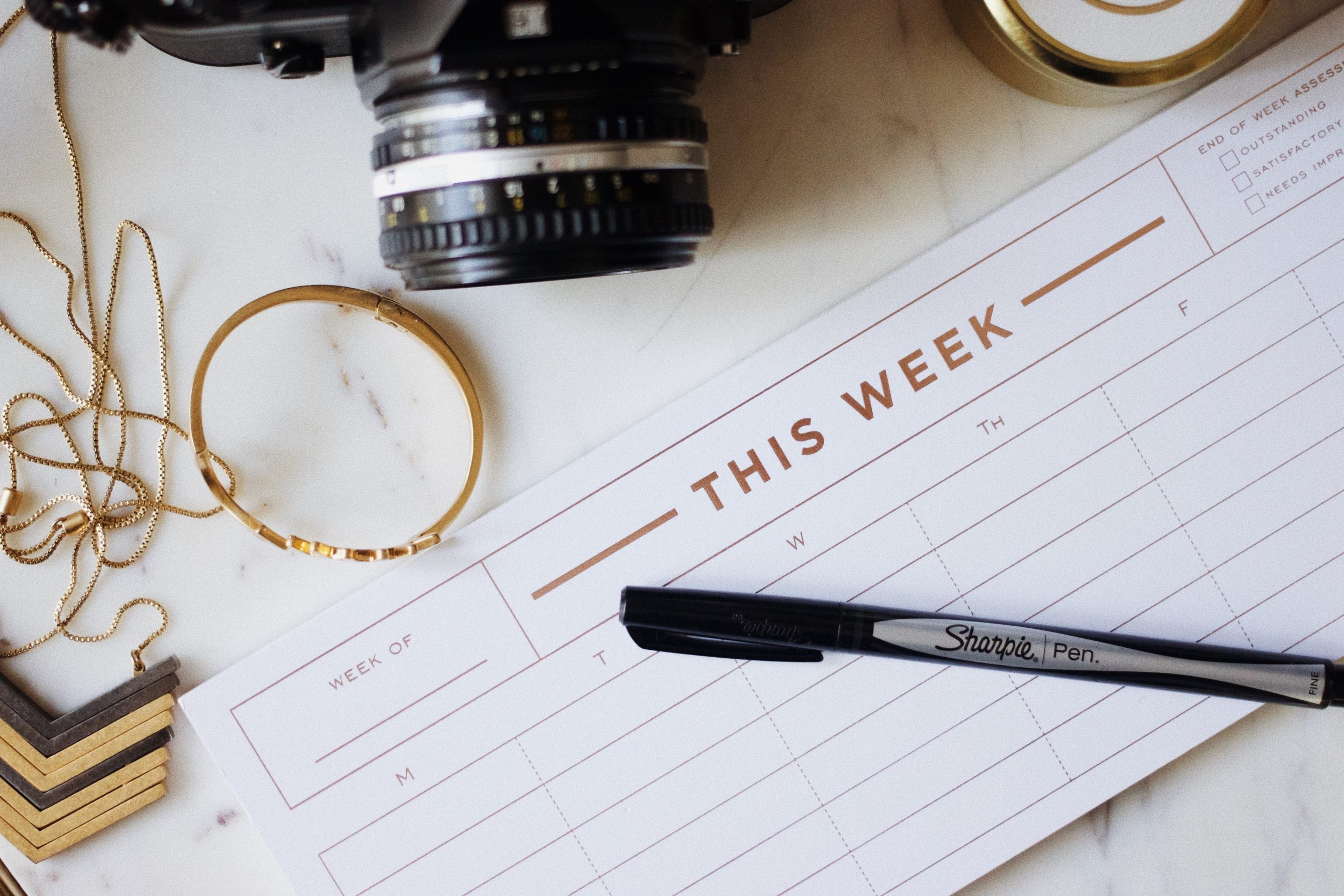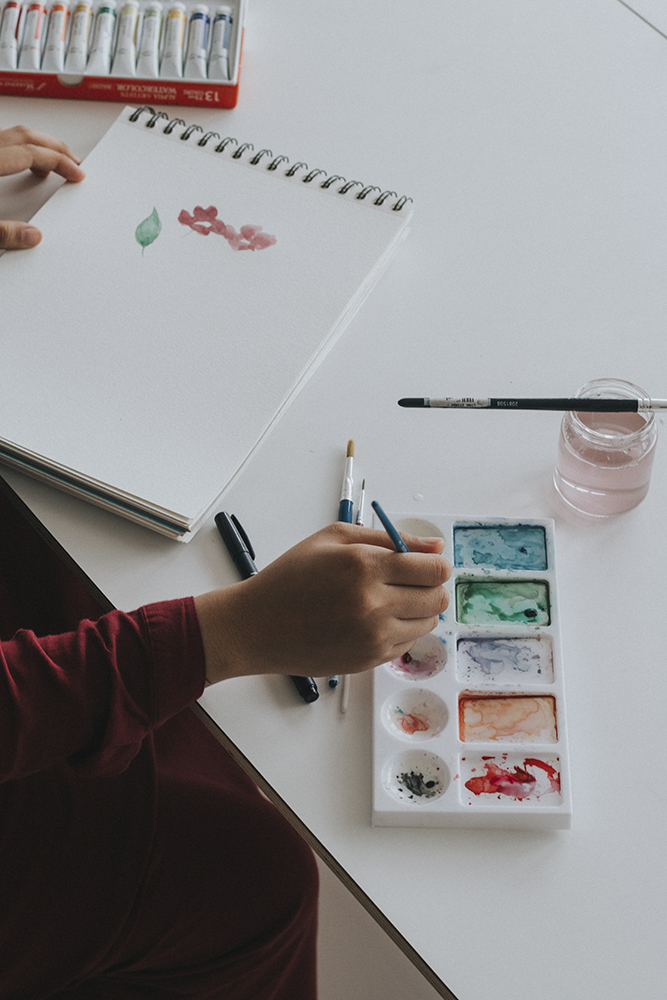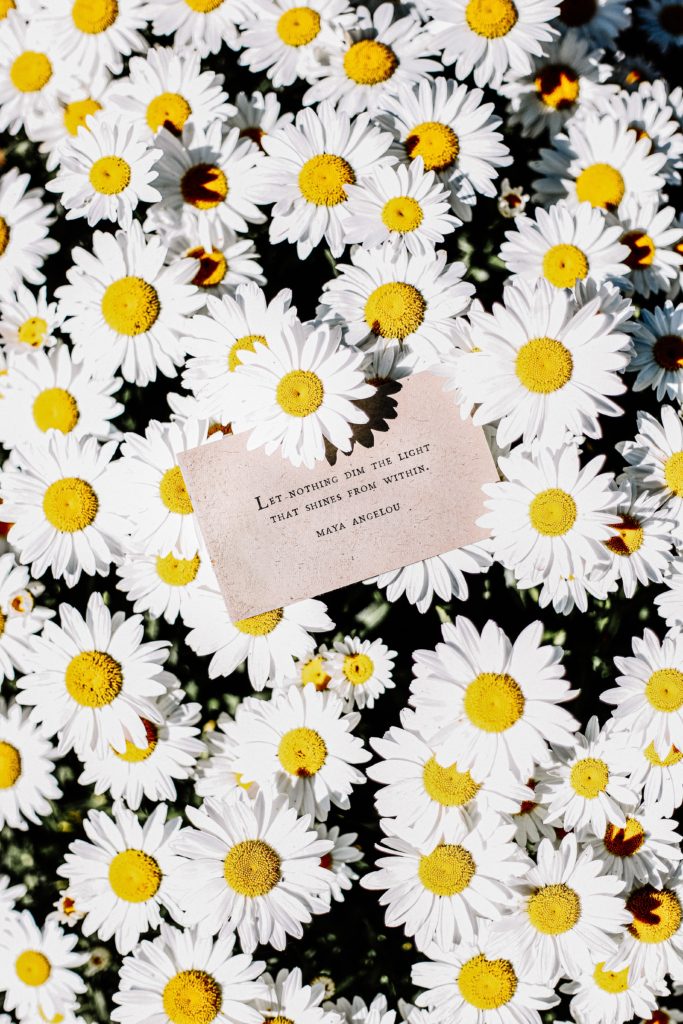Many of us consider ourselves to be self-aware. But take a moment to think—how deep does your level of self-refection really go? The succinct Oxford definition of self-reflection is, “meditation or serious thought about one’s character, actions, and motives.” It’s simply getting in tune with who you are. This allows for greater connection with others and the world around you; aka raising emotional intelligence. The effects, too, filter into the creative realm. A deeper perspective offers greater meaning, resulting in projects that are more multifaceted; while a surface-level state can translate into work that, just like the mental state, skims the surface rather than having the breadth and depth of insight you intend.
Then, there are the mental effects. While we live in the era of being “woke,” it can be tricky to not accidentally fall into narcissistic tendencies when so many of us are not only promoting our brands and even selves on social media. It can be hard to not associate worth with the amount of followers or engagement. It’s a perpetual cycle. In terms of psychological impact, it brings up a spectrum. One on end, it’s a virtue to never admit a mistake, never look back, and never analyze anything past a gut feeling. People at the other end experience extreme guilt and regret, and beat themselves up. Typically, this devolves into obsessive thoughts and behaviors.
If you are able strike the right balance, you’ll come away with a deeper understanding of your self, comfort with imperfection, less regret, and a healthier way to cope with common mental health issues such as depression and anxiety. Insight may not be an absolute cure, but it’s a path toward a healthy mind and body as well as creativity; and the deeper the insights, the more they can fuel the creative process. In fact, a study published in the Journal of Social and Clinical Psychology showed that without self-awareness, we would not be able to “produce creative accomplishments.” Here are a few ways to help self-reflect in a positive and productive way.

Do More Than Pencil It In
Once you put something on the calendar in pen, it develops a new level of importance. If you schedule a day and time to self-reflect, it means you’re making yourself the priority for this portion of the day. Start small: try 5 minutes at first. Then build up to an amount of time that most works for you and fits into your daily schedule. In terms of frequency, once a week is a good guideline, but feel free to change to meet your needs.
Set the Mood
Self-reflection time should be viewed similar to meditation time so ambiance is important. Pick a peaceful spot where you won’t be disturbed. Close your eyes and perhaps were a sleep mask. You want to create a blank canvas so your reflections become clearer. Have a journal or an electronic device next to you so you can write or speak notes about your session.

Free-Associate at First
In our day-to-day lives, we can be very goal-oriented. During your self-reflection time, you want to take some of that pressure away. For your first couple of self-reflection sessions, do some simple free-associating. Think of words that describe yourself that lead to other random words and thoughts about yourself. Don’t be afraid to have your thoughts go all over the place. This will have the effect of opening up your subconscious. Takes notes about the associations that stick in your mind.
Pick a Theme
After your free association sessions, you’ll begin to notice patterns and themes. For example, dissatisfaction with romantic relationships in your life or low self-esteem. When you feel you’re ready to leave the free association phase, begin to mark these themes down in your calendar for your self-reflection sessions.
What is foremost in your mind to reflect on? Do you want to look into being blocked creatively? Is a troubling romantic relationship on your mind? Write down a one word theme such as creativity, relationship, mood, stress-level or happiness that you want to focus on during your next session.
Cherish Your Creative Moments
A study of call center employees showed that those who contemplated lessons learned for 15 minutes at the end of the day performed 23% better after 10 days than those who did not. While this is not specific to creative endeavors, it is entirely applicable. In the study, this was practiced each day, but can also be done more broadly. Take time to consider your creative moments. First, look at one of the successes you’ve had recently and think about the conditions that might have led to it. What music were you listening to? What shows were you watching around that time? Who were you talking to and about what? These stimuli trigger different areas of the brain, which sparks new ideas.
Consider what you were feeling and thinking at the time of your creative success. Did it come easy? Did you struggle? Then, revisit the space you were in when you were hit with an unsuccessful project. What were the circumstances at the time? How did your thoughts and feelings differ from your successful project? Lastly, compare the two spaces you were in. How can you develop the thoughts, feelings and actions that led you to your success?

Pay Attention To Repetitive Words and Phrases
As you go through your notes, you’re going to pick up repeat words and phrases. For example, you may not think of yourself as depressed, but as you go over your self-reflection notes, you might notice a lot of words like, “sad,” “helpless,” “can’t sleep,” “loss of interest in things.” These repetitive words and phrases will
help draw your attention towards issues you may have been repressing or trying to ignore in your day-to-day life.
Reflect, Don’t Ruminate
Self-reflecting in a healthy way is associated with lower levels of depression, however, research shows that ruminating or negatively obsessing counteracts those benefits, leading to higher levels. The problem is that people who reflect also tend to obsess. It’s the difference between looking at a finished project and seeing the good and the bad in total versus focusing on one tiny mistake over and over until you want to scream.
Sound familiar? Instead, try to create distance and try some objectivity. Take yourself out of your own story for a little while. View yourself as like a reporter would a story—it’s about fact-gathering. That means pushing bias and judgement to the side for a moment. Keep in mind that most people find this difficult; the key is to keep practicing. As with meditation or any new habit, it takes time. Start by self-reflecting objectively for 30 seconds, then one minute, and so on.
 Be Kind to Yourself
Be Kind to Yourself
As you’re self-reflecting, you’re going to come across strengths and weaknesses, mistakes and successes…the good, the bad, and the ugly. There is only certainty in knowing that it’s not all going to be perfect. When talking to a friend, so much is clear, but we tend to be our own harshest critic, and can even be cruel at times. Remember, that’s nothing but counterproductive. Treat yourself like you would treat your friend–with kindness, tolerance, and unconditional love. Reframe mistakes as learning opportunities rather than regrets.
Look Deeper Into Your Narrative: Don’t Re-read the Same Story
We all have a set way of looking at ourselves. “I’m athletic.” “I’m a good friend.” “I’m a people-pleaser.” “I’m not good under pressure.” “I’m not very attractive.” “I have to work harder than everyone else.” “I’m bad at public speaking.” I’m awkward.” We’ve established these roles and ideas about ourselves, most of which take hold from a young age.
But are they all still true? Were they even true to begin with or were they constructs developed by other people that we internalized? As you self-reflect into your past, present, and future, go beyond what you have already established about yourself. View your narrative from different angles. You might find that you end up re-writing your story in novel ways with the effect of enhancing your creative process with a fresh perspective.











Leave a reply